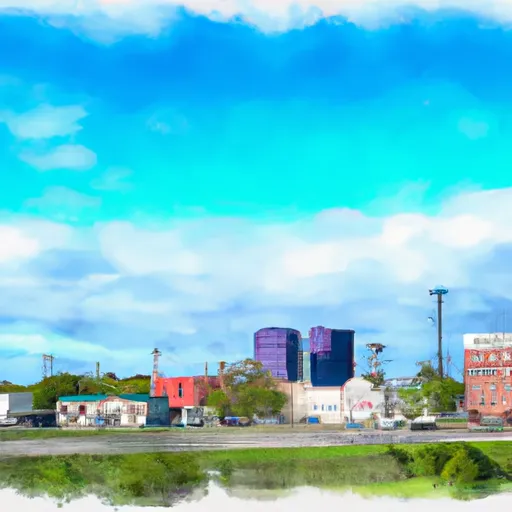°F
°F
mph
Windspeed
%
Humidity











Violet, Louisiana is a small community located in St. Bernard Parish, situated along the banks of the Mississippi River in the southeastern part of the state. The climate in Violet is characterized by hot and humid summers, with temperatures reaching the mid to high 90s Fahrenheit, and mild winters with temperatures ranging from the 40s to 60s Fahrenheit. The area also experiences a decent amount of rainfall throughout the year.
Hydrologically, Violet is influenced by its proximity to the Mississippi River and nearby marshes. The Mississippi River provides a crucial water source for the region, supporting various ecosystems and providing opportunities for fishing and boating. Additionally, the surrounding marshes are home to diverse wildlife and offer excellent opportunities for birdwatching, kayaking, and nature exploration.
Outdoor recreational opportunities in Violet are abundant. The area boasts numerous parks and natural areas, perfect for picnicking, hiking, and enjoying the scenic beauty of Louisiana's wetlands. Fishing is a popular activity, with ample opportunities to catch a wide variety of freshwater and saltwater species. Additionally, boating enthusiasts can explore the picturesque waterways, and birdwatchers can spot a plethora of migratory and indigenous bird species.
Overall, Violet, Louisiana offers a unique blend of a subtropical climate, diverse hydrology constituents, and a range of outdoor recreation opportunities, making it an attractive destination for nature lovers and outdoor enthusiasts alike.
Weather Forecast
Violet receives approximately 1629mm of rain per year, with humidity levels near 87% and air temperatures averaging around 21°C. Violet has a plant hardyness factor of 9, meaning plants and agriculture in this region tend to thrive here all year round.
Regional Streamflow Levels
9,870
Cubic Feet Per Second
2,020
Cubic Feet Per Second
66
Cubic Feet Per Second
1,800
Cubic Feet Per Second
Nearby Camping
| Camping Area | Reservations | Toilets | Showers |
|---|---|---|---|
| Walkiah Bluff Water Park | |||
| Lake Columbia | |||
| Okatoma Water Park | |||
| Dry Creek Water Park | |||
| DLo Water Park | |||
| New Orleans Reserve Military |



